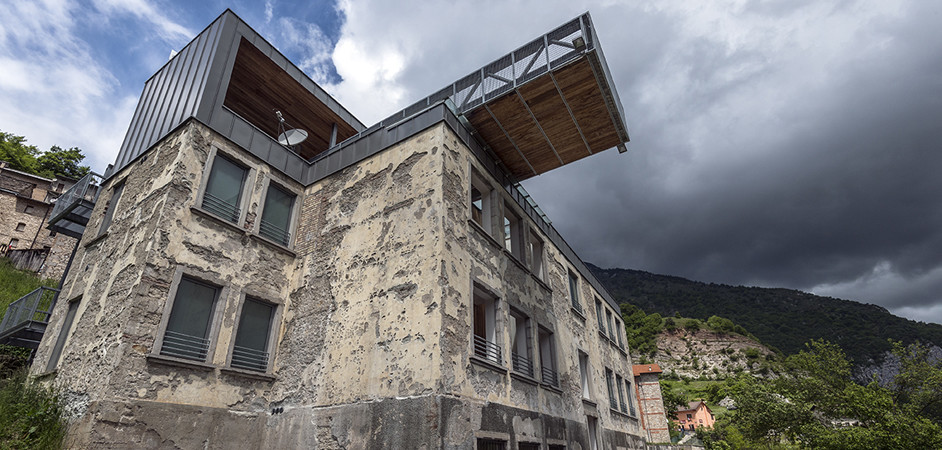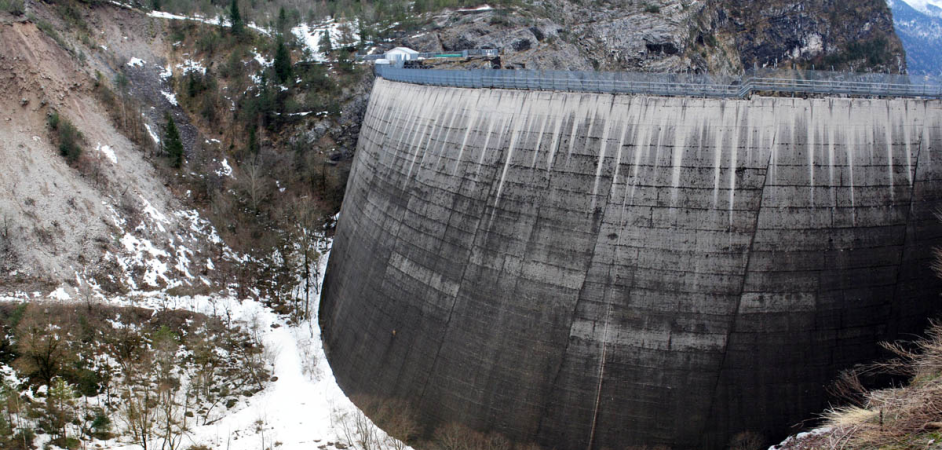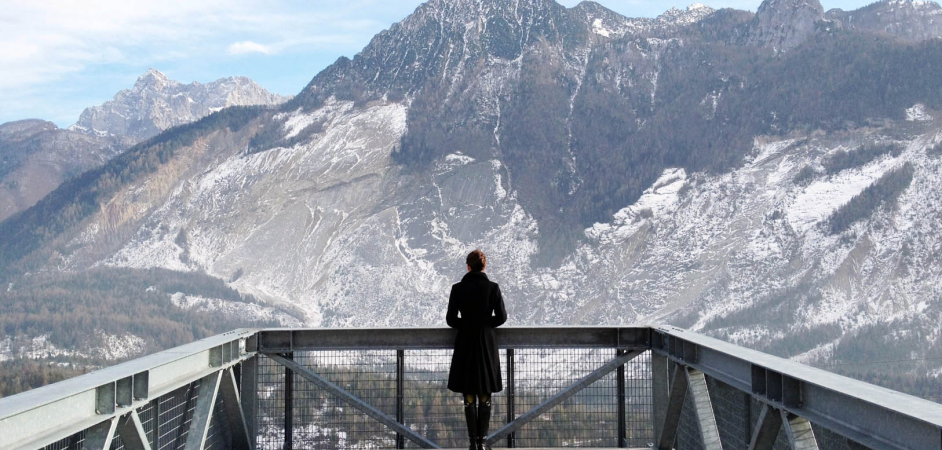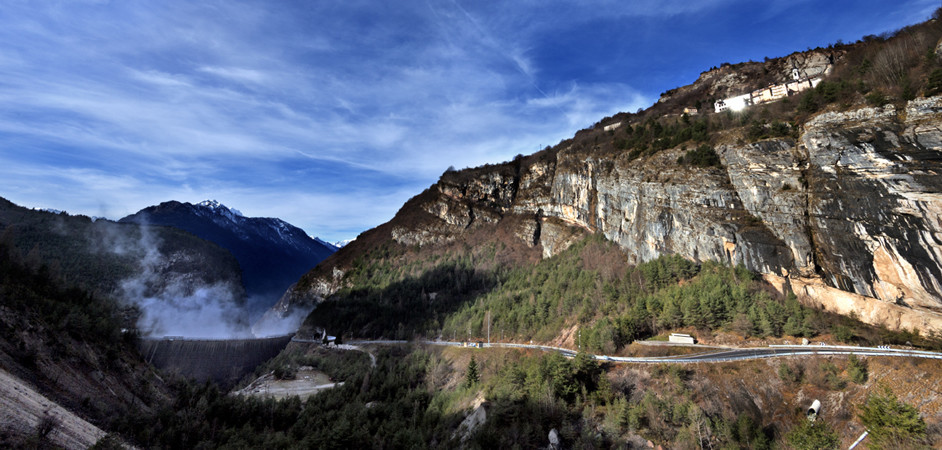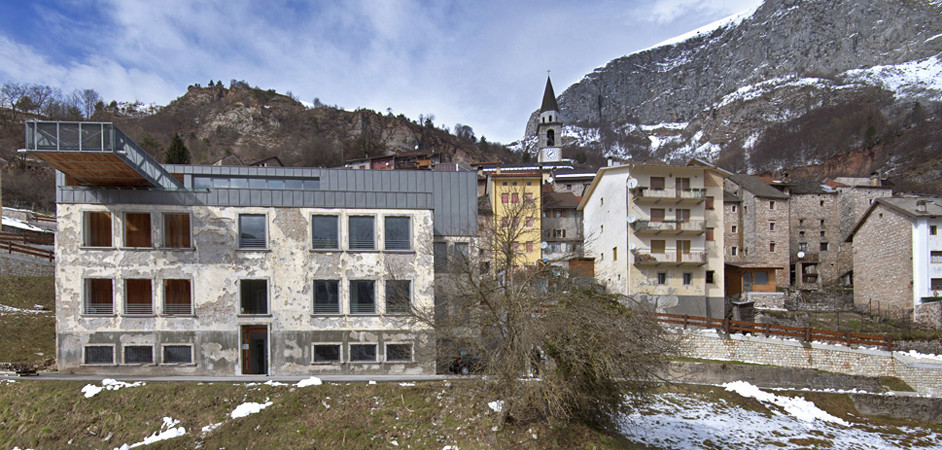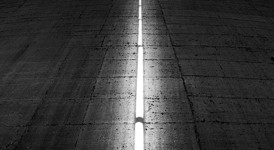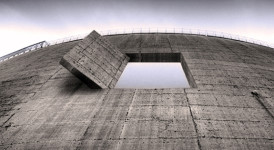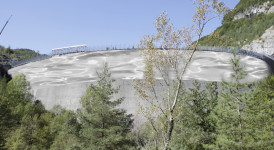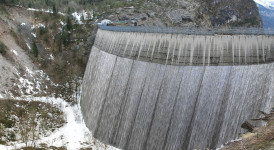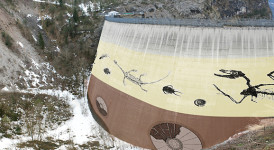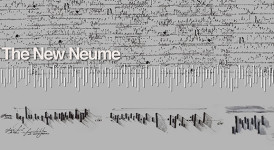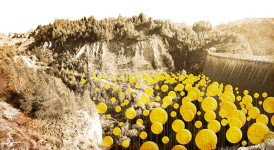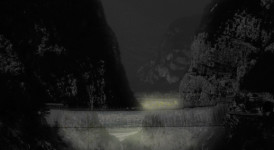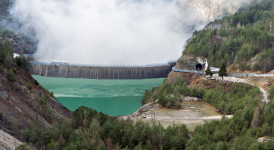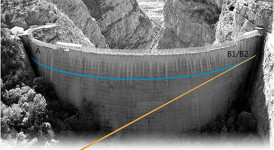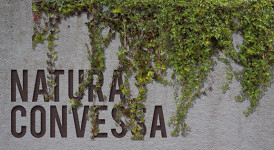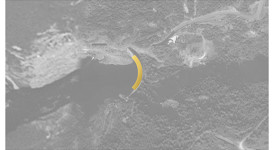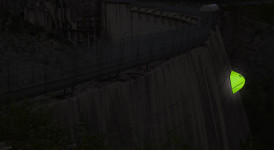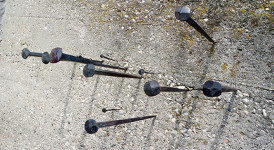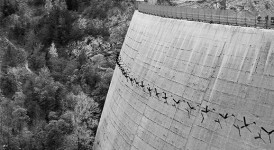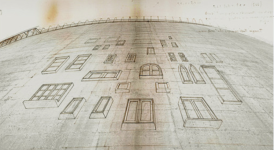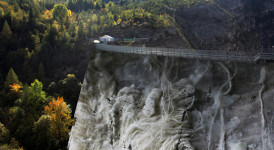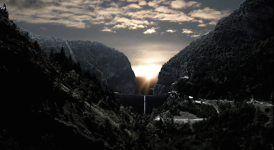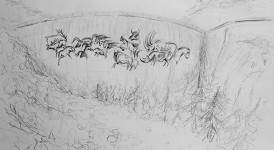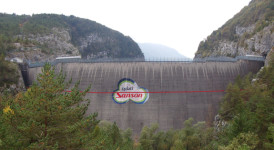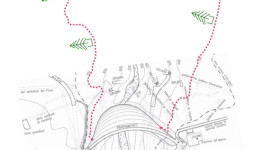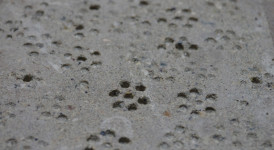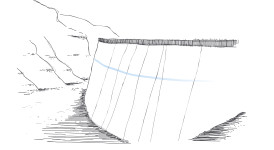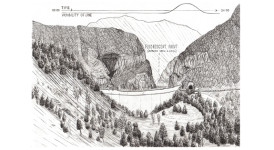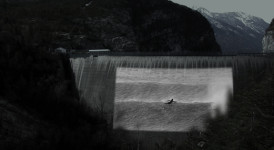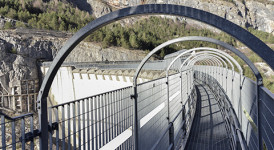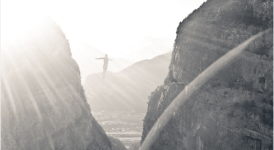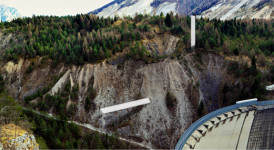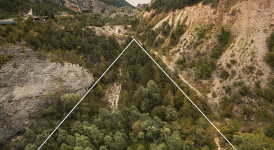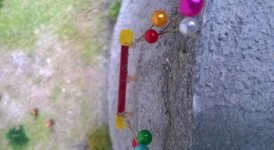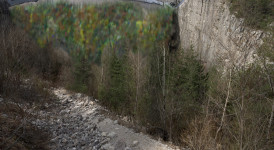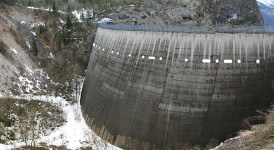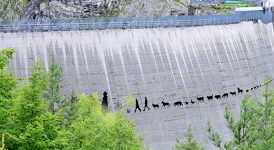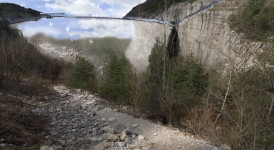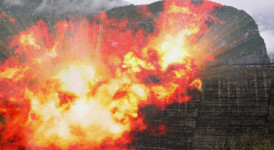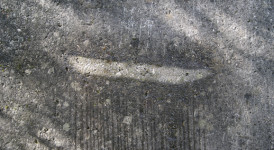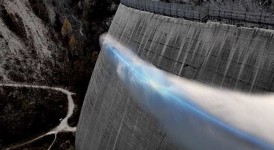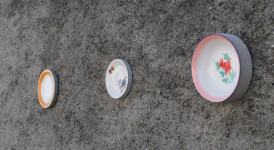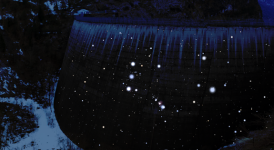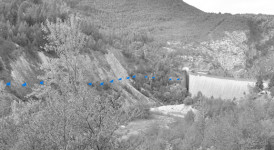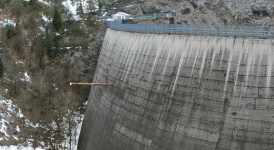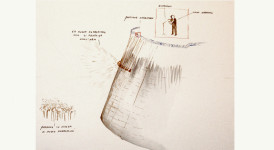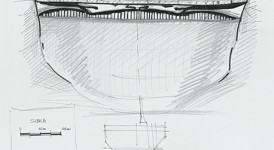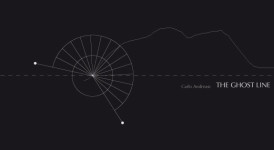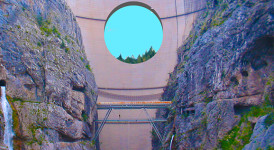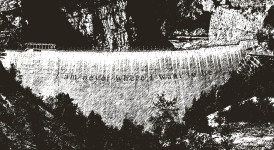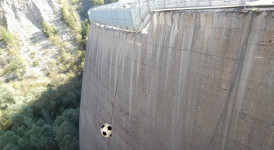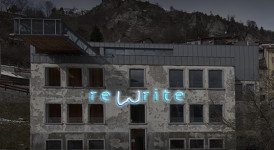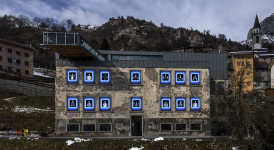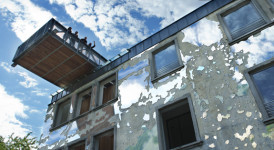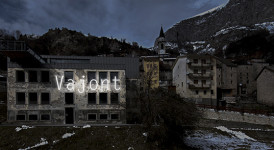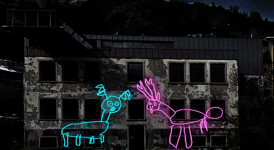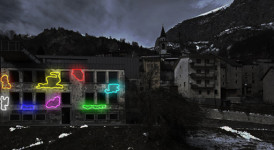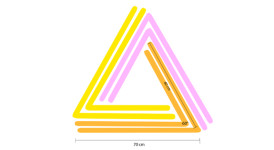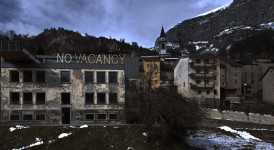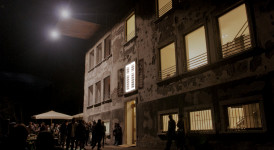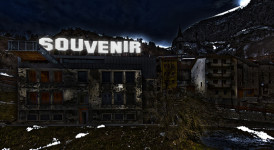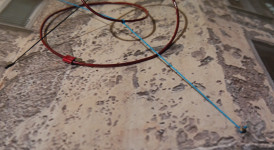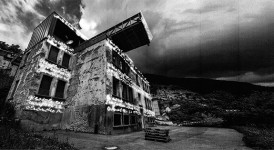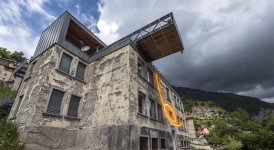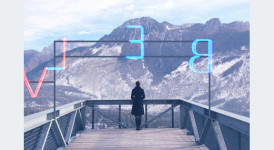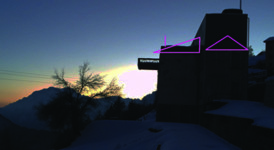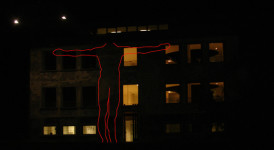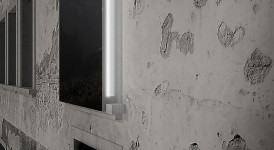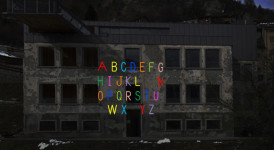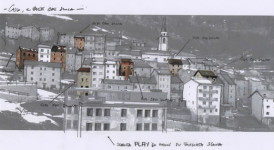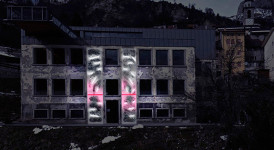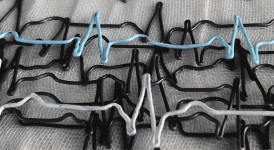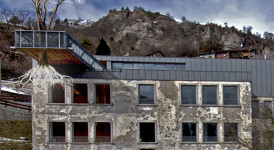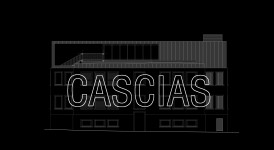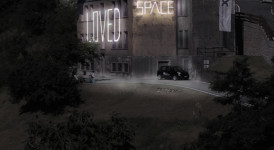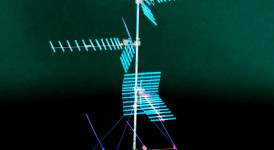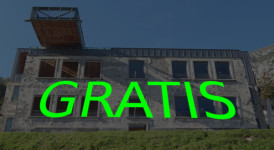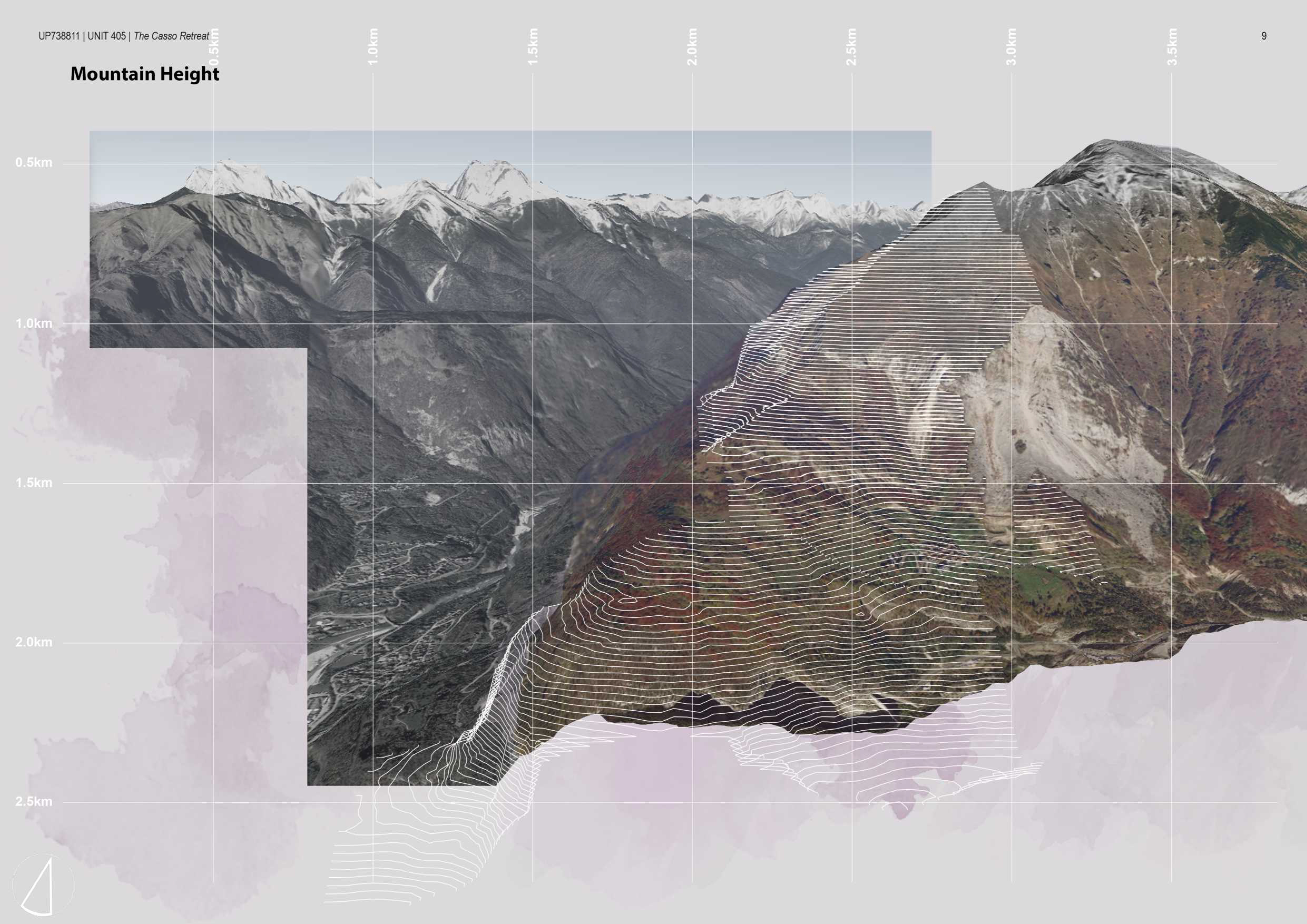two calls for vajont: about
the Contest Two calls for vajont is conceived and is curated by dolomiti contemporanee.
dolomiti contemporanee is a project that works in critical contexts in the dolomiti-unesco region, aiming to provide a propelling stimulus, through contemporary art and culture, to depressed sites which are, however, equipped with great potential. in 2012, dolomiti contemporanee opened, a short distance away from the vajont dam, the nuovo spazio di casso, a centre for contemporary culture of the mountain, and operational headquarter of twocalls.
the double contest two calls for vajont will lead to the making of a piece of contemporary art on the southern front of the nuovo spazio di casso, and of a permanent artwork on the vajont dam.
the vajont dam, scene of the tragedy that in 1963 caused more than 2.000 causalities, is to this day symbol of death.
after more than half a century, the vajont area is still mainly identified as the place of the tragedy.
the dam and the venue are morphing now, through this contest, into two projective “construction sites”, through which it is possible to finally look at the future.
twocalls promotes, through contemporary art, a responsible reflection on the vajont area, that is able to think and picture new images for this territory, refusing to accept that its identity should forever coincide with that of the tragedy.
_______________________________________________________________________________
Il Concorso Two calls for Vajont è ideato e curato da Dolomiti Contemporanee.
Dolomiti Contemporanee è un progetto che opera in contesti critici nella regione delle Dolomiti-Unesco, per fornire uno stimolo propulsivo, attraverso l’arte e la cultura contemporanea, a siti depressi, dotati di grande potenziale. Nel 2012, Dolomiti Contemporanee ha aperto, a breve distanza dalla Diga, il Nuovo Spazio di Casso, un centro per la cultura contemporanea della montagna, centro operativo di Twocalls.
Il doppio Concorso Two calls for Vajont porterà alla realizzazione, di un’opera d’arte contemporanea sulla facciata sud del Nuovo Spazio di Casso, e di un’opera d’arte permanente sulla Diga del Vajont.
La Diga del Vajont, teatro della Tragedia che nel 1963 causò oltre 2.000 morti, è ancor oggi un simbolo della morte.
Ad oltre mezzo secolo da quell’evento, l’area del Vajont viene tuttora identificata prevalentemente come il luogo della Tragedia.
La Diga e lo Spazio divengono ora, attraverso il concorso, due cantieri proiettivi, attraverso i quali si guarda avanti.
Twocalls promuove, attraverso l’arte contemporanea, una riflessione responsabile sull’area del Vajont, che sappia pensare e figurare per questa terra delle immagini nuove, rifiutando di accettare che la sua identità debba coincidere per sempre con quella della Tragedia.
Two calls for vajont – international contemporary art
The Contest takes place in the Vajont area, that on the 9th of october 1963 was marred by the horrible Vajont Tragedy. Nowadays, a new structure is active in this area, which aims to produce an innovative stimulus, through contemporary art and culture, to this still deeply injured territory. Said structure is the Nuovo Spazio di Casso, re-opened by Dolomiti Contemporanee as a centre for a contemporary culture of the mountain. An important task is therefore entrusted to the visual arts: to interact responsibly with the life and history of this critical location, generating a series of new images for it. These images have the function of sighting the past, allowing a present, admitting a future.
the first phase of twocalls will take place between june 2014 and april 2015. The deadline initially fixed on 30 October has been extended until 30 April (see more).
It is a double contest, which involves two different planning sites: the Vajont Dam, with a call for a line, and the southern front of the Nuovo Spazio di Casso, with a call for a wall.
A call for a line is, therefore, the contest that is going to concern the eastern side (the friulian one) of the Vajont Dam.
A call for a wall is the contest that is going to concern the southern front of the Nuovo Spazio di Casso.
The individuals that support the project are: Ministry of Environment, Region of Friuli Venezia Giulia, Region of Veneto, Province of Pordenone, Province of Belluno, vajont foundation, Municipality of Erto and Casso, municipality of longarone, municipality of claut, municipality of cimolais, municipality of vajont, municipality of belluno, dolomites unesco foundation, CNAPPC (National council of architects), Confindustria Belluno Dolomiti (Confederation of italian industries), Consortium Bim Piave, Bevilacqua La Masa Foundation, Mart Museum of modern and contemporary art of trento e rovereto, merz foundation, ccc strozzina.
Enel, the company that owns the dam’s plant, supports the contest, sharing its cultural perspective. Acqua Dolomia is the main sponsor of the Dolomiti Contemporanee Special Awards. Neonlauro will provide materials and manufacturing for a call for a wall.
The awards bestowed by the contest will be four.
The a call for a line Award and the a call for a wall Award, will be given to the two winning artwork, which will be then actually realized.
The Special Dolomiti Contemporanee Award (wall and line) will be given, instead, to the two best non-feasible artworks (more information on the awards in the participate section).
General objective and meaning of the contest
Consistently with Dolomiti Contemporanee’s cultural policy, particularly considering the Casso experience, where a cultural “construction site” designed to produce innovative images has been initiated starting from 2012, the double Contest Two calls for Vajont is announced.
The intention is to demonstrate through the contest itself that, right in this place, that for decades has been identified and understood by public opinion exclusively as the place of the Tragedy (Vajont Tragedy, 1963), is definitely possible, and rather necessary, to develop, through an intellectual and creative reflection, a propositional and propelling activity that will contribute to generate a new cultural perspective for this area, responsibly looking at the future.
The human being, as such, expresses itself, and can’t avoid doing so.
No happening, as terrible as it could be, can be ultimately incommensurable, preventing the human to continue to act, through constructive actions of meaning, in the organic process of history.
The famous sallustian expression faber est suae quisque fortunae, that here, for 50 years, has echoed like a verdict and a warning, can at this point be true in a positive light as well, morphing from epitaph into new perspective.
The Contest reclaims the primacy of the expression as constructive identity peculiar to the human being who acts its own spirit.
_______________________________________________________________________________
Two calls for Vajont – Concorso Internazionale d’arte contemporanea
Il Concorso si svolge nell’area del vajont, che il 9 ottobre del 1963 fu funestata dalla terribile tragedia del vajont. oggi in quest’area è attiva una nuova struttura, che opera a produrre uno stimolo rinnovativo, attraverso l’arte e la cultura, per questa terra ancora ferita. si tratta del nuovo spazio di casso, riaperto da dolomiti contemporanee quale centro per una cultura contemporanea della montagna. alle arti visive è dunque affidato un compito importante: si tratta di interagire responsabilmente con la vita e la storia di questo luogo critico, generando per esso una serie di nuove immagini. queste immagini hanno la funzione di traguardare il passato, consentire un presente, ammettere un futuro.
la prima fase di twocalls si svolgerà tra giugno 2014 e aprile 2015. Il termine inizialmente fissato al 30 ottobre è stato prorogato al 30 aprile (vedi qui).
si tratta di un doppio concorso, che prevede due distinti siti di progetto: la diga del vajont, con a call for a line, e la facciata sud del nuovo spazio di casso, con la call for a wall.
a call for a line è dunque il concorso che riguarderà il lato est (versante friulano) della diga del vajont.
a call for a wall è il concorso che riguarderà la facciata sud del nuovo spazio di casso.
i soggetti che patrocinano e sostengono il progetto sono: ministero dell’ambiente, regione friuli venezia giulia, regione veneto, provincia di pordenone, provincia di belluno, fondazione vajont, comune di erto e casso, comune di longarone, comune di claut, comune di cimolais, comune di vajont, comune di belluno, fondazione dolomiti unesco, consiglio nazionale degli architetti, pianificatori, paesaggisti e conservatori, confindustria belluno dolomiti, consorzio bim piave, fondazione bevilacqua la masa, mart museo di arte moderna e contemporanea di trento e rovereto, fondazione merz, ccc strozzina.
enel, società proprietaria dell’impianto della diga, sostiene il concorso, condividendone la prospettiva culturale. acqua dolomia è main sponsor dei premi speciali dolomiti contemporanee. neonlauro fornirà materiali e lavorazioni per a call for a wall.
quattro saranno i riconoscimenti attribuiti dal concorso.
il premio a call for a line e il premio a call for a wall, saranno attribuiti alle due opere vincitrici, che saranno quindi realizzate.
il premio speciale dolomiti contemporanee (wall e line) verrà attribuito invece alle due migliori idee non realizzabili (maggiori informazioni sui premi nella sezione participate).
obiettivo generale e significato del concorso
in coerenza con la politica culturale di dolomiti contemporanee, e in particolare con l’esperienza intrapresa a casso, dove, a partire dal 2012, si è avviato un cantiere culturale volto alla produzione di immagini rinnovative, si indice il doppio concorso two calls for vajont.
si intende con esso dimostrare che, proprio in questo luogo, che per decenni è stato identificato e inteso dall’opinione pubblica esclusivamente come il luogo della tragedia (tragedia del vajont, 1963), è senz’altro possibile, e anzi necessario, sviluppare, attraverso una riflessione intellettuale e creativa, un’attività propositiva e propulsiva, che contribuisca a generare una prospettiva culturale per quest’area, volgendosi responsabilmente al futuro.
l’uomo, in quanto tale, si esprime, e non può evitare di farlo.
nessun fatto, per quanto terribile, può risultare definitivamente incommensurabile, impedendo all’uomo di continuare a compiersi, attraverso azioni costruttive di senso, nel processo organico della storia.
la celebre locuzione sallustiana: faber est suae quisque fortunae, che qui, per 50 anni, ha risuonato come sentenza e monito, può a questo punto esser fatta valere anche nel bene, trasformandosi da epitaffio in prospettiva.
il concorso rivendica il primato dell’espressione quale identità costitutiva propria dell’uomo che agisca il proprio spirito.


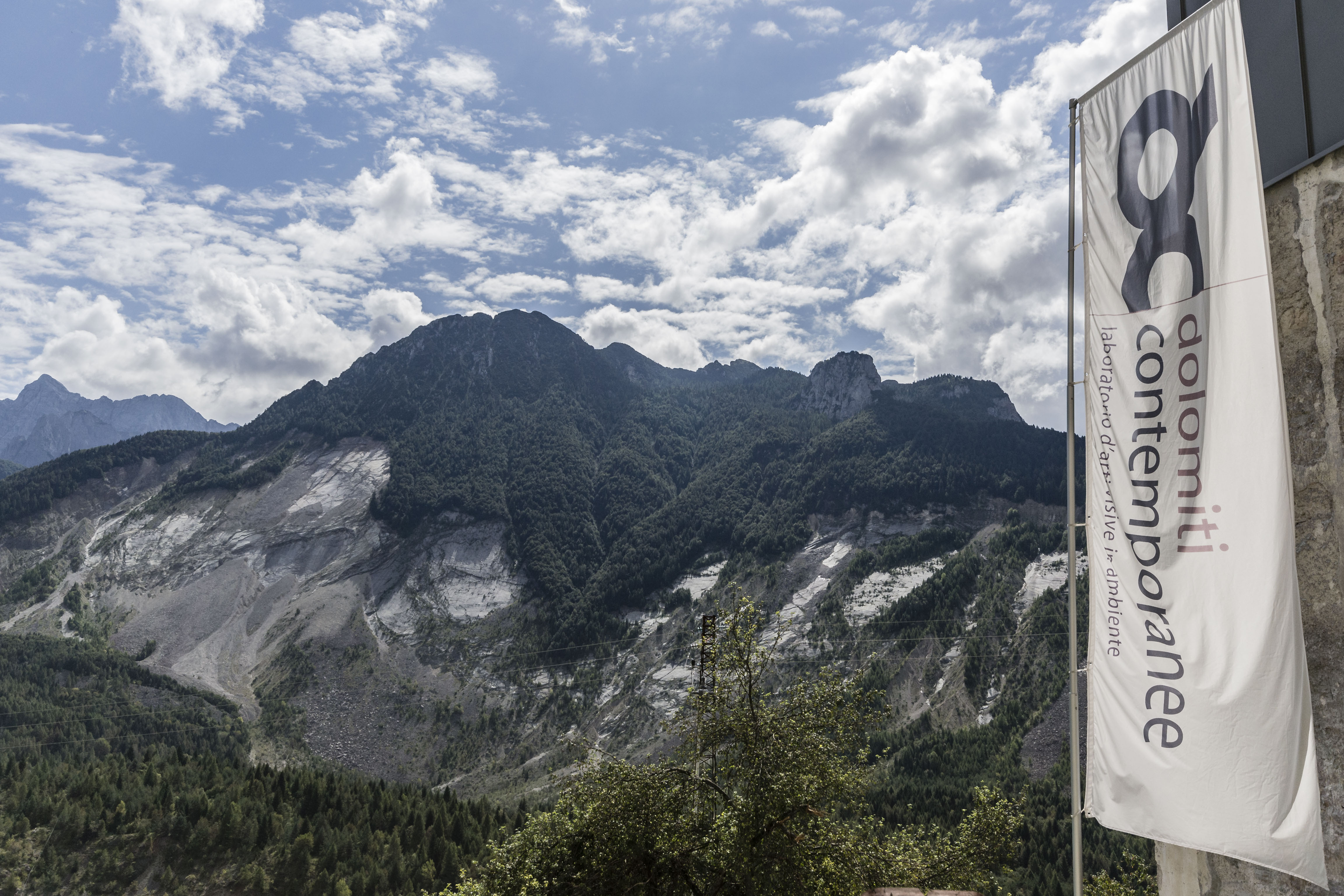
Tuesday, June 15th 2021, 2 – 4 PM, webinar panel:
two calls for vajont: fase _restart.
Vajont: [...]

